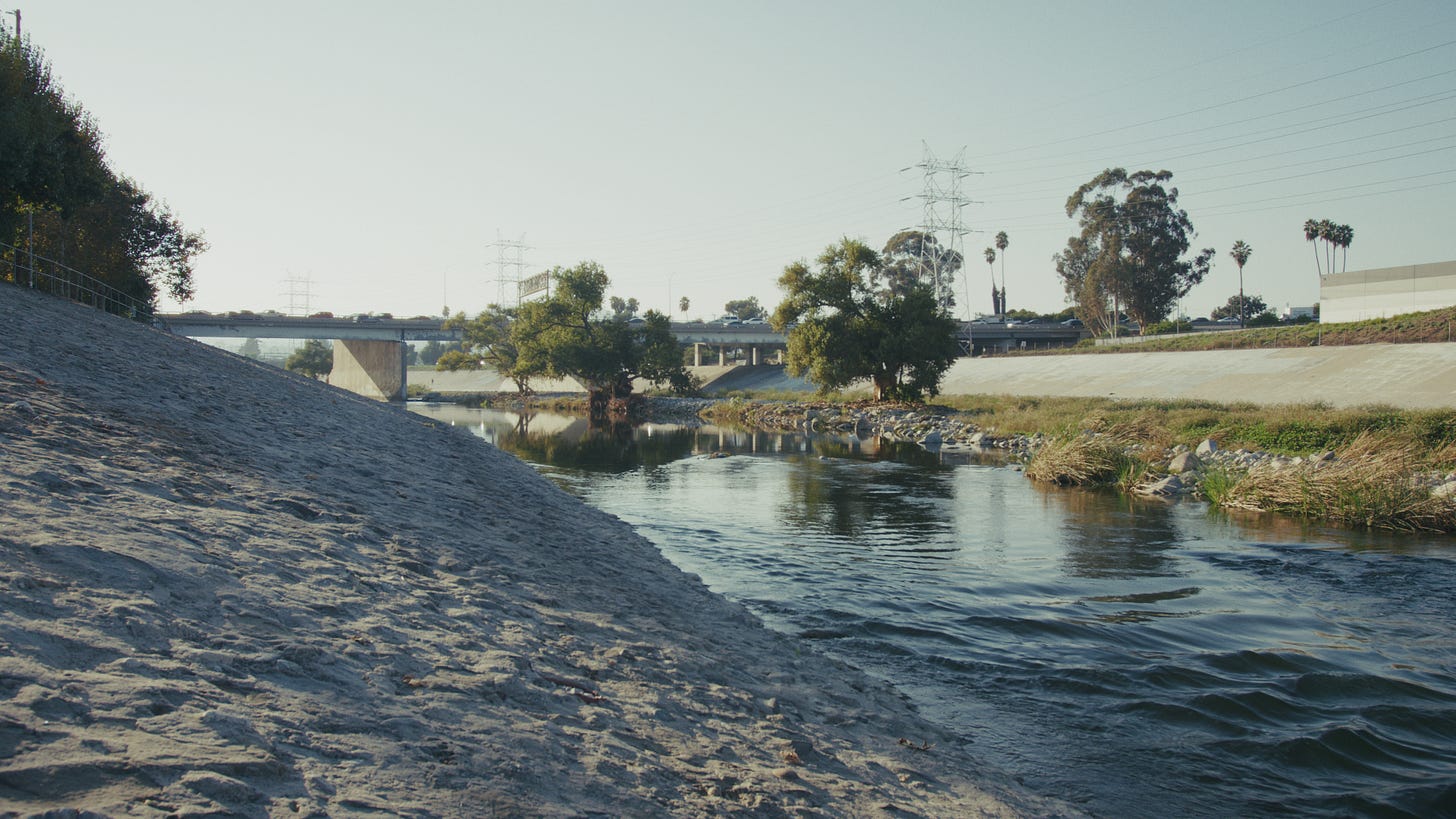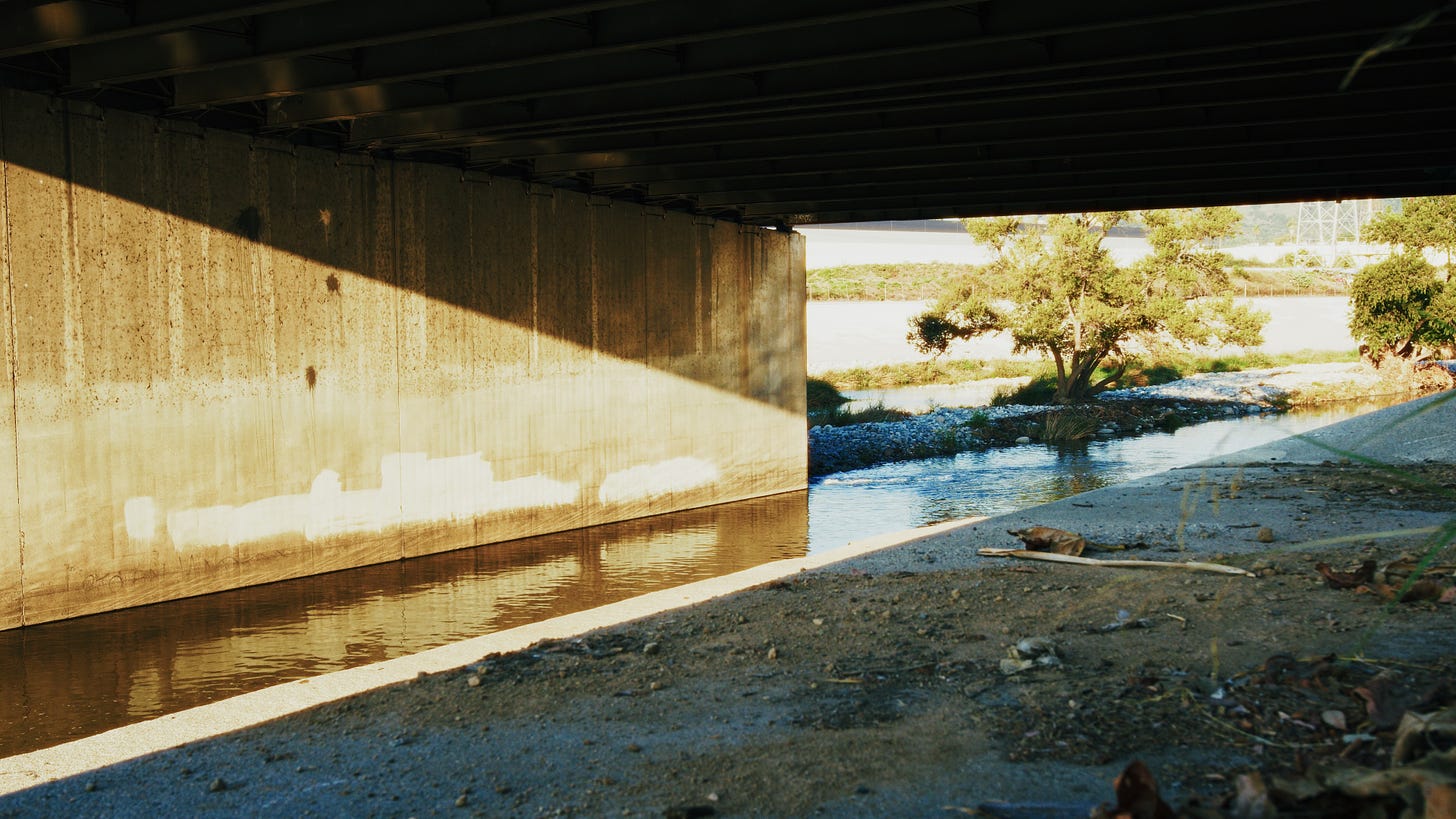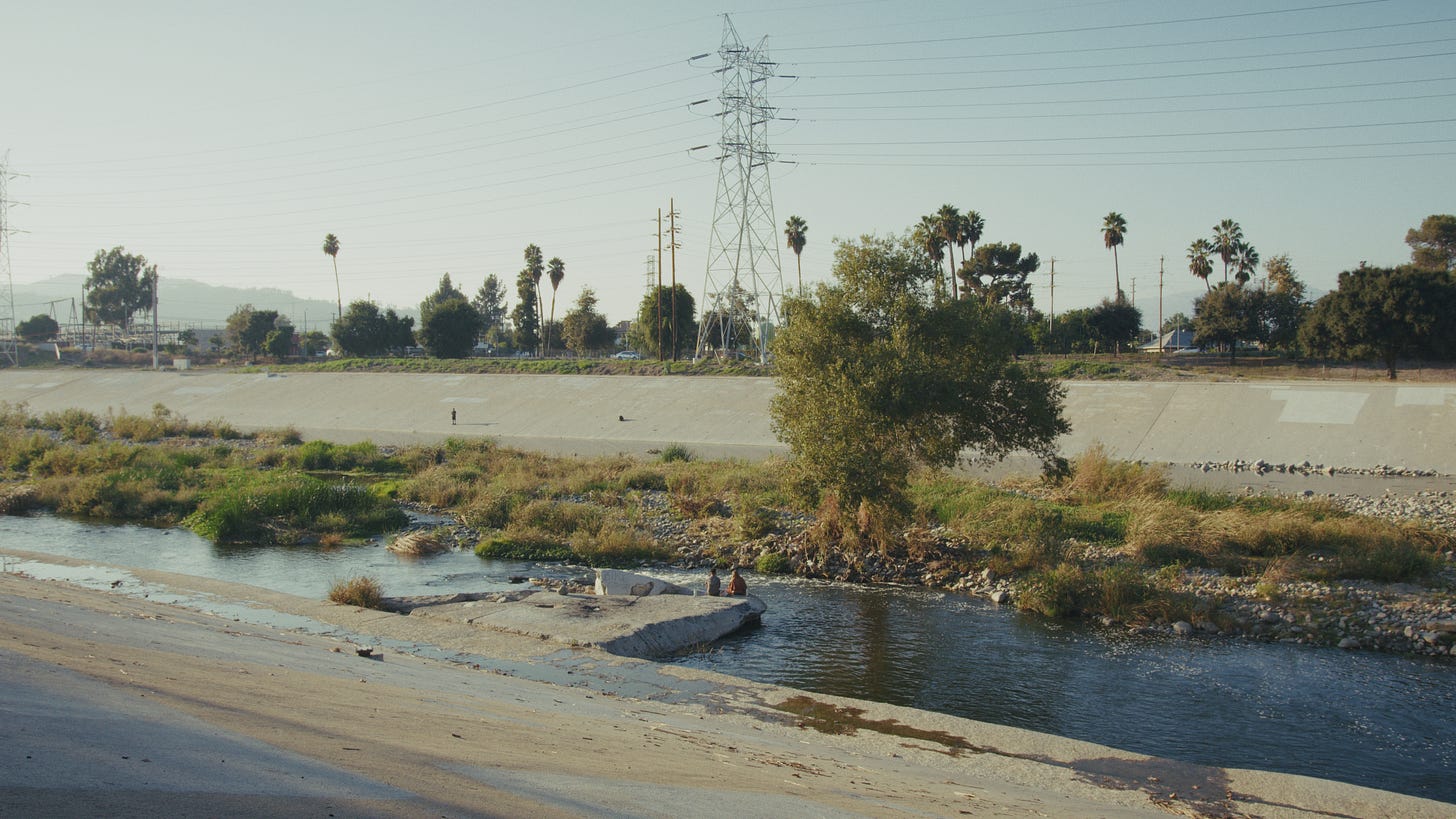We’re at the threshold of pre-production for Concrete River, and this week marked a pivotal decision that will shape everything about how we make this film.
But the truth is, sometimes the most important creative breakthroughs come from constraints, not freedom.
With our core team in place:
JQ Cole attached as our lead
Kevin Perry as DP and creative partner
Chris Hall as producer/investor
Another experienced producer potentially coming aboard
We faced a fundamental question that every indie filmmaker wrestles with:
How do you take a $2.5 million vision and bring it to $300K without betraying the story’s soul?
The reality check was two-fold.
First, the practical timeline. Kevin, who I’ve known almost since I’ve moved to LA, had a smart strategy:
Shoot a high-concept proof-of-concept short, run the festival circuit, then use that momentum to raise the larger budget. It’s a solid plan, but one that extends the timeline by 2-3 years minimum. I know this from experience with Gabriela, which we’ve been running in festivals since 2022 and is still going. It is highly worth it, but if you want to make your feature debut, you’re adding significant time to the process.
The second reality hit when I saw the re-election results.
The money for socially conscious films with mostly Black casts simply isn’t going to be there unless you already have serious leverage. And even then, it comes with large strings attached. I have decades of entertainment industry experience, but I don’t yet have the long track record of producing and delivering features. I’m still somewhat of an outsider, which means my voice can be dismissed if I’m not willing to use what I have and can control.
But here’s where it gets interesting:
I want to prove that you can create a film on a low budget, retain ownership, and actually earn a profit from it. The bigger the budget, the more mouths (investors) to feed. Scale back without scaling quality back, and you can see real returns on both money and impact.
So why wait and hand that leverage over when I can work for the benefit of the people involved in creating the film?
THE REALITY CHECK
What’s Working:
We’re making steady progress across all fronts. The script is in a strong place. Everyone I send it to wants to get involved. I’m having a melody created as the foundation for the song that drives Travis’s character arc.
We’ve also connected with someone who worked in marketing and PR for The Mixed Space (which came up first in my research into the online mixed community during the pandemic). She’s putting together a scope of work for our nonprofit outreach and marketing strategy, building on the three audience personas I’d already developed. This saves us thousands in marketing agency costs.
And this makes all the difference in how we approach distribution.
What’s Challenging:
The permit situation is a perfect example of how costs cascade. The LA River scenes need a $1000 permit just to start, potentially requiring an avian biologist depending on location. The bike path scenes need another permit.
You see how quickly this spirals.




But we’re being very strategic about where and how we shoot. Our production designer has given us some great tunnel locations where Travis can live, complete with addresses. The right tunnel that looks out onto something inspiring can really transform the visual language of the film. We’re scouting spaces that serve the story while avoiding permit cost explosions.


Our Solutions:
We’re adopting the Sing Sing model:
Most Favored Nations pay scale where everyone (cast and crew) gets SAG minimum $250/day, but with meaningful backend participation.
Here’s how the math works (potentially):
After investors recoup their investment plus return (usually 15-20%), profits split 50/50 between investors and crew, distributed department by department. So if we’re at $300K budget, the first $30K profit might go 50/50 between investors and producers, next $30K between investors and camera department, and so on.
It creates real incentive alignment and transparency. Something that’s painfully rare in this industry.
The main character of Travis has synesthesia. So he sees music in the form of animating, prismatic lights that pulsate in rhythm with music he’s listening to. So for these visual effects, we’re experimenting with 1980s anamorphic lenses to create in-camera flares, while having our VFX artist from Gabriela test approaches that look professional without breaking our budget. Chris and I will handle heavy lifting in editing. Significant free labor, but it’s a long-term investment in proving what’s possible.
Lessons For Fellow Creators
- Do the minimum exercise: Analyze what your story is actually about and find the true minimum needed to preserve its essence. Don’t just write off that you need a certain amount. Discover what you actually need and get creative from there. See the constraint as creative fuel, not limitation.
- Build your audience plan before you shoot: Following Jon Reiss’s approach, have a clear strategy for finding and building your audience before cameras roll. Know who your film is for and how you’ll reach them. This makes getting people on board easier because they see you as someone who plans for actual success, not just hopes for it. You owe this to your team who took a chance on you.
- Wear low budget as a badge of honor: Be proud that you’re creating in opposition to how larger companies work. Use constraints to galvanize creativity and team morale. Your team becomes even more valuable because you can’t throw money at problems. Encourage them to bring creative solutions. It makes the film better.
LOOKING AHEAD
Our immediate hurdle is getting financing properly structured – creating the LLC, setting up separate bank accounts, getting lawyers to draft contracts. Our target timeline for completing the initial financing is August. That will give us a concrete dollar amount to work with and a clear picture of how we can proceed with additional investors.
While we wait, I’m preparing how to use LA’s unique environments to our advantage. There are so many visually distinctive locations that can make the film look top-quality despite budget constraints. We’re particularly excited about the tunnel possibilities, the bike path along the LA River and finding spaces that serve Travis’s journey while creating that cinematic look we need.
I’m also beginning outreach to organizations and potential additional investors, treating this as both a labor of love and proof of concept for how smaller films can achieve big results.
Question for everyone:
Any experience with LA permits or services/tips for navigating the permit process more efficiently? Also curious, what LA locations have you found that look cinematic but don’t require expensive permits?
Production Stats:
- Days completed: 0 (pre-production phase)
- Budget status: $50-100K raised toward $300K goal, targeting completion by August
- Team morale: High and excited
- Biggest win this week: Connecting with an experienced producer to help move pieces forward
